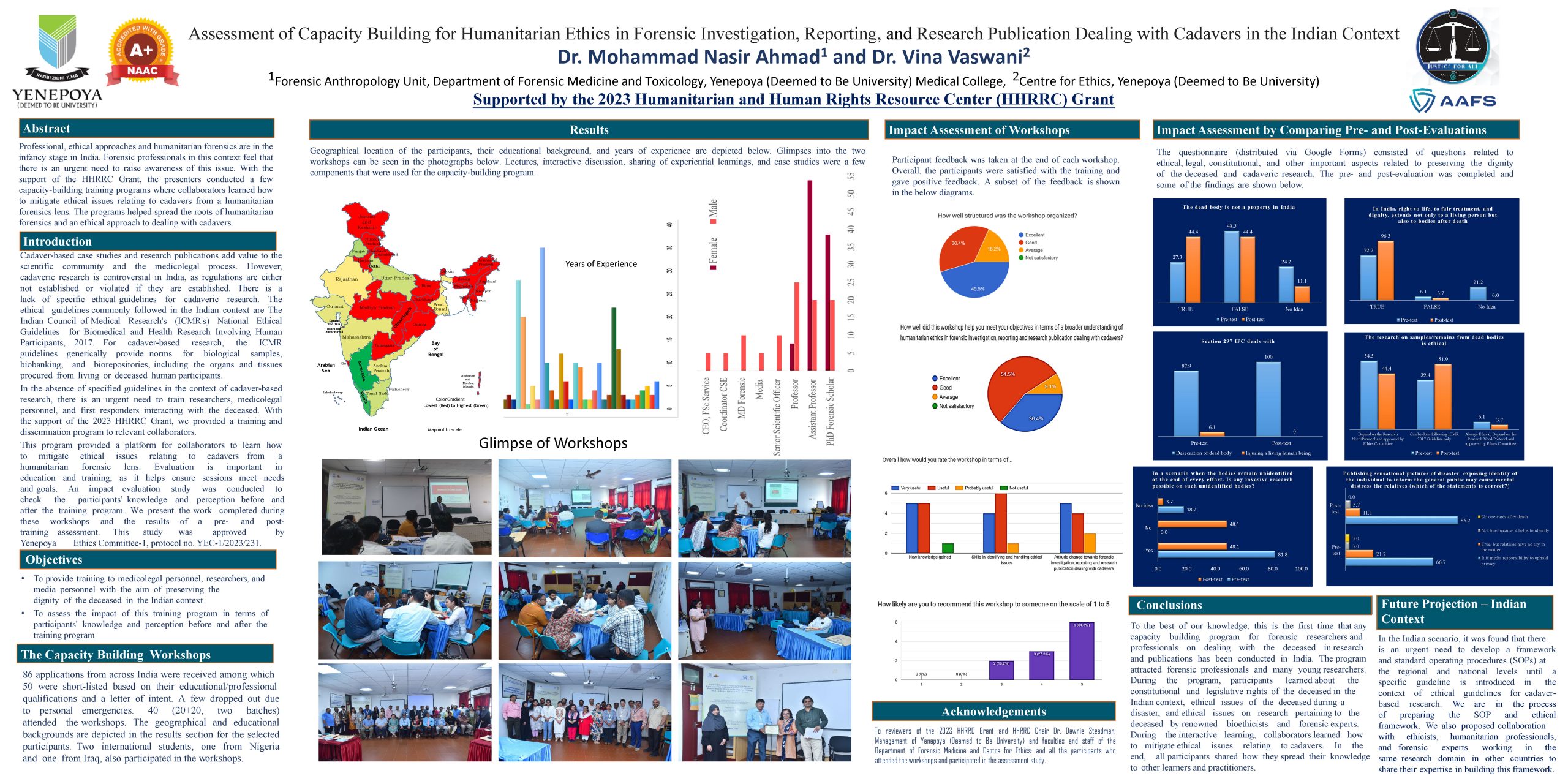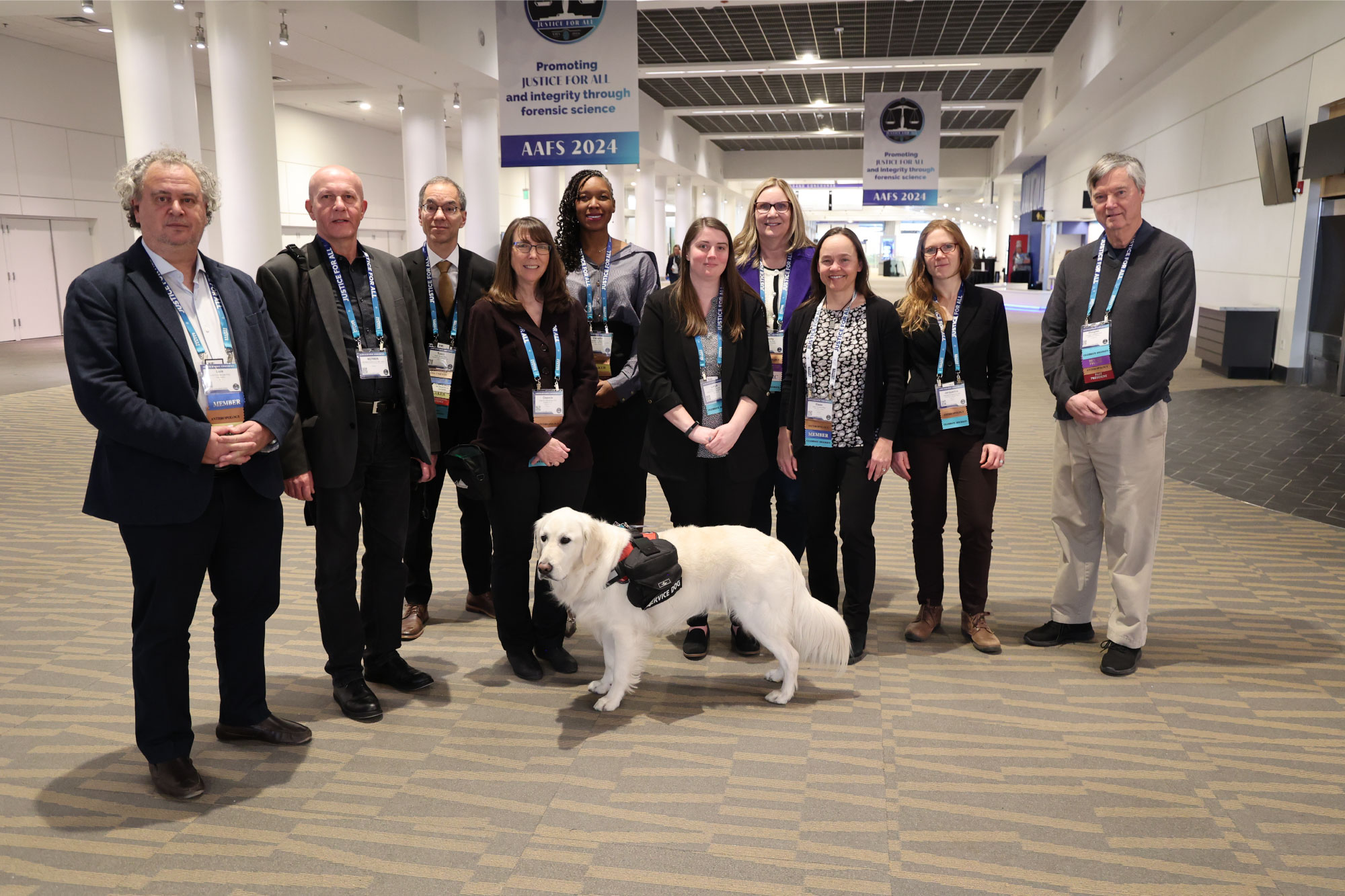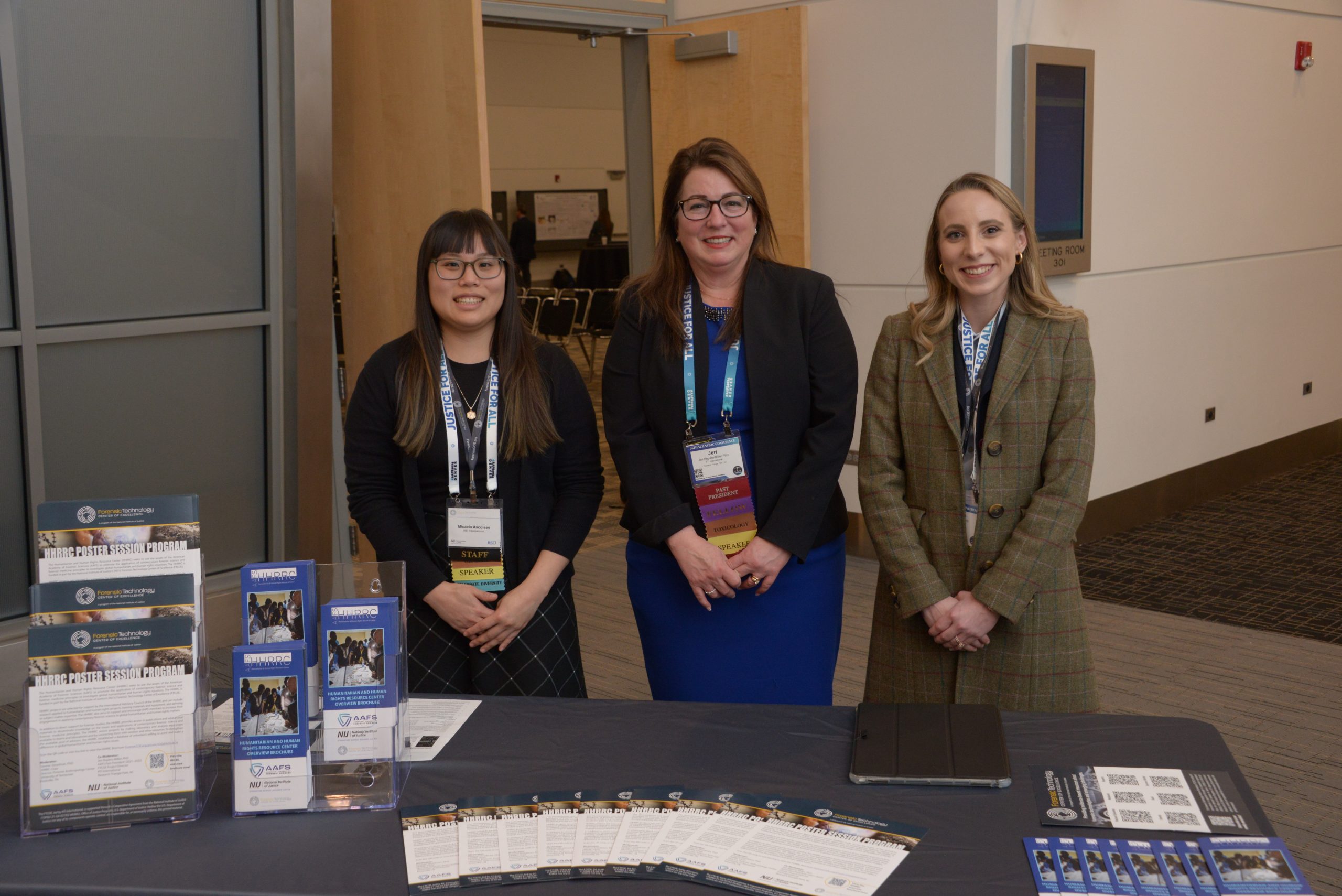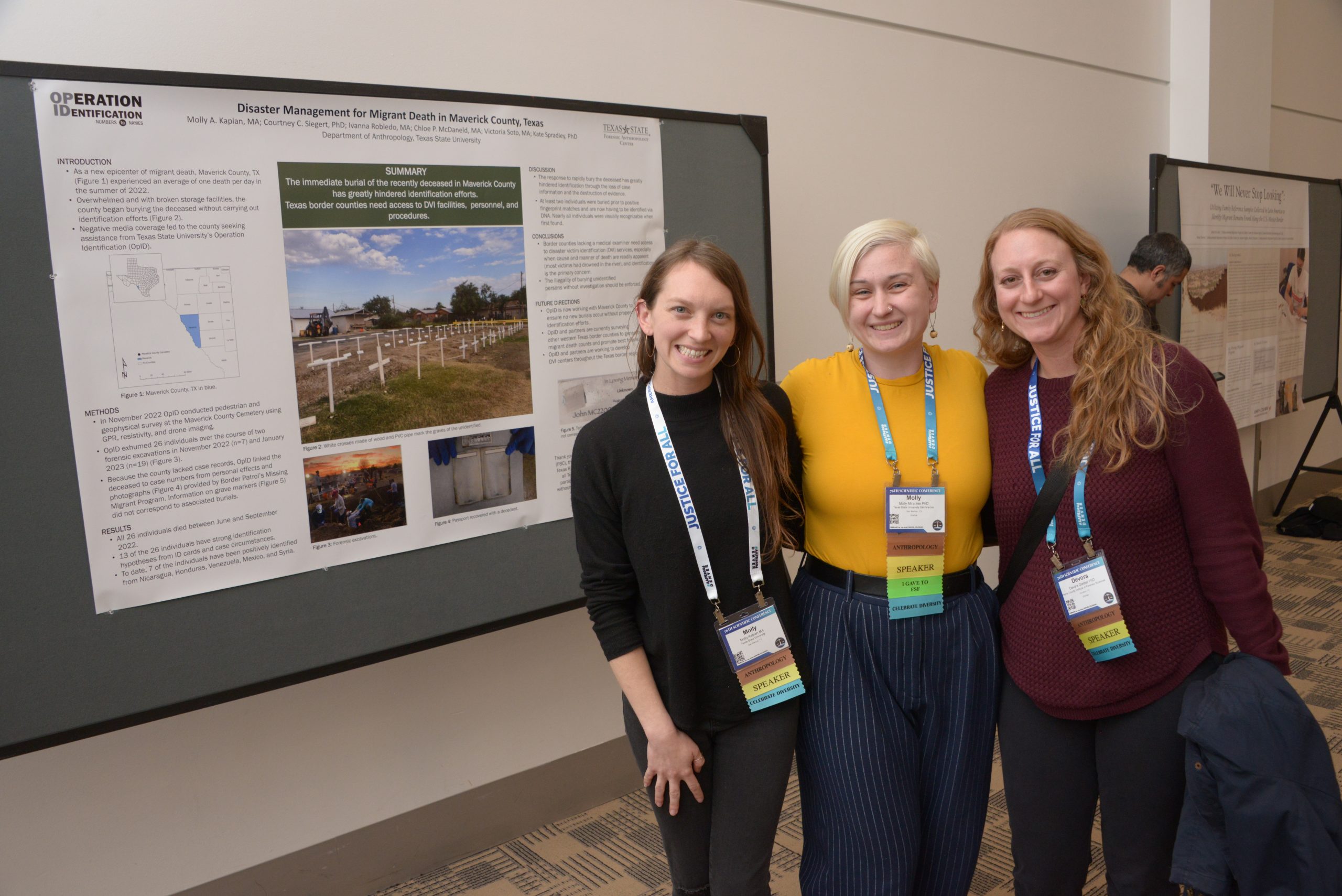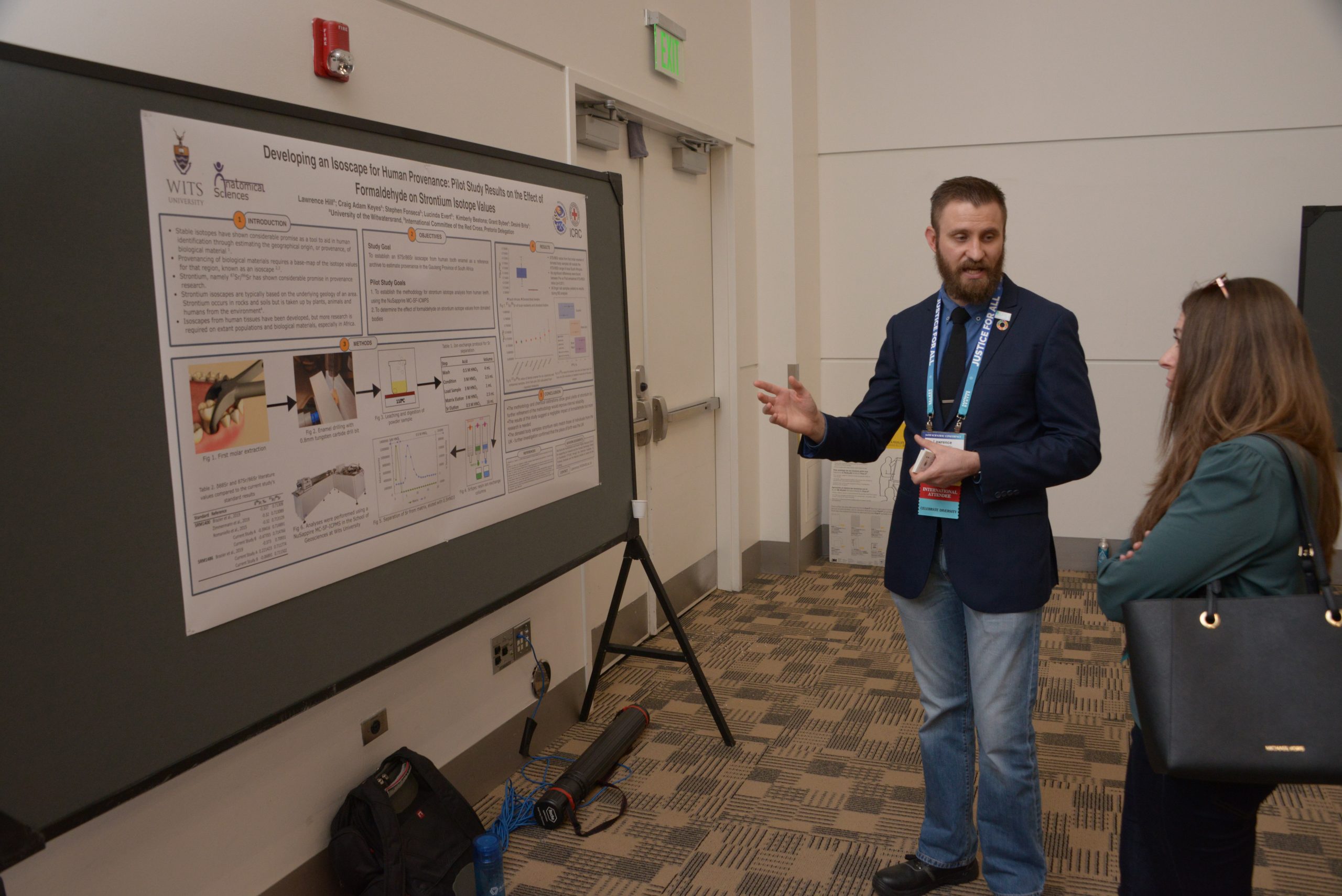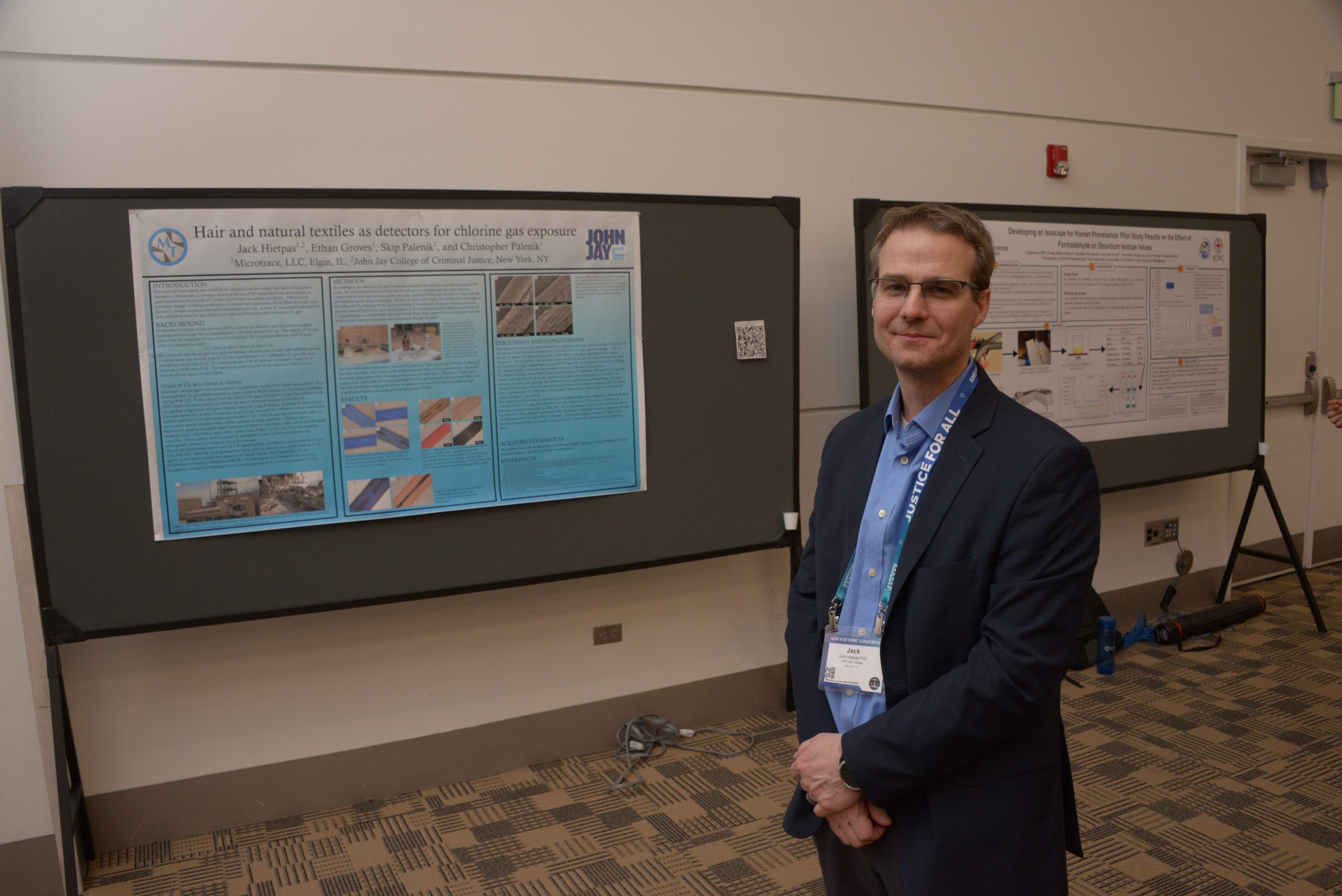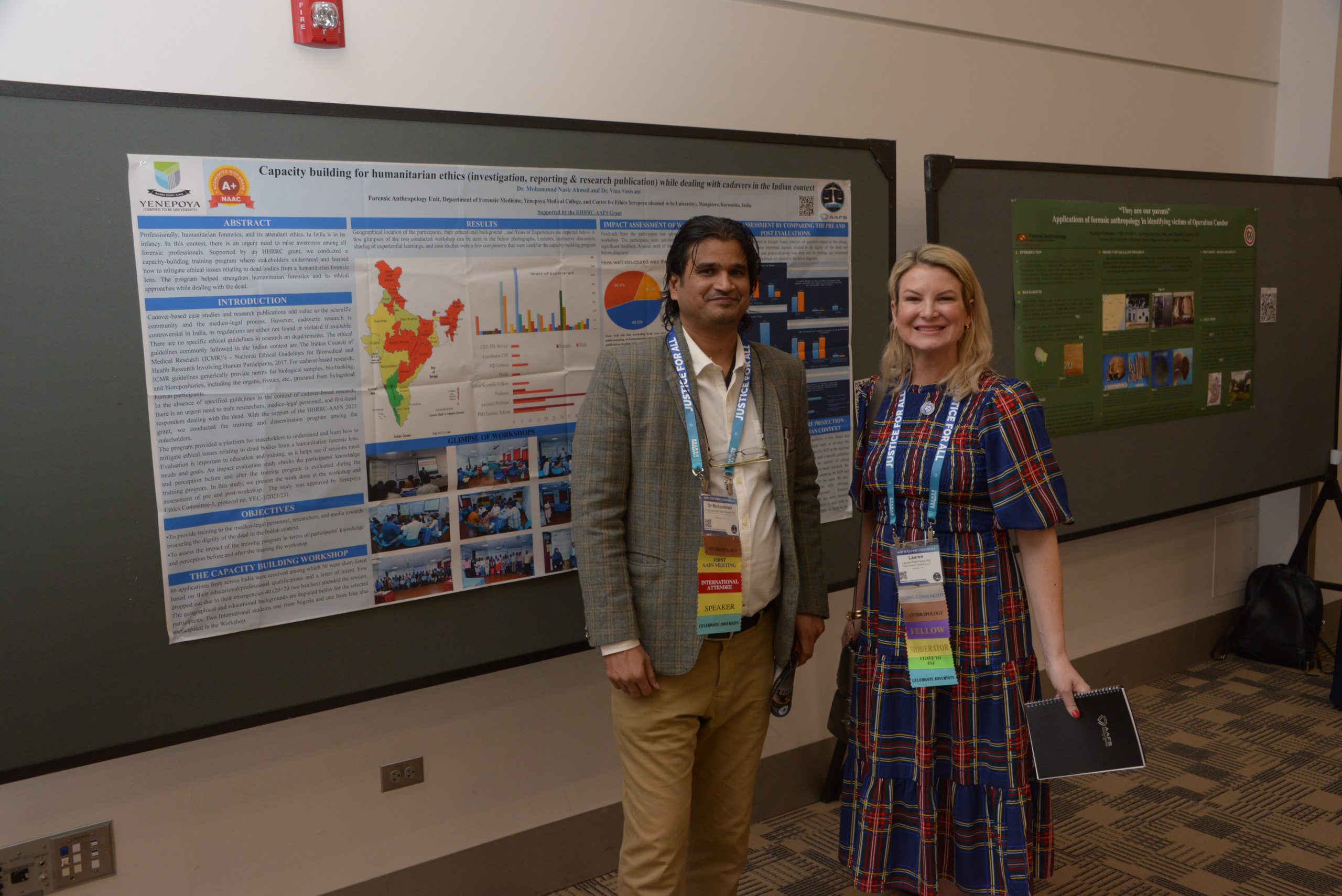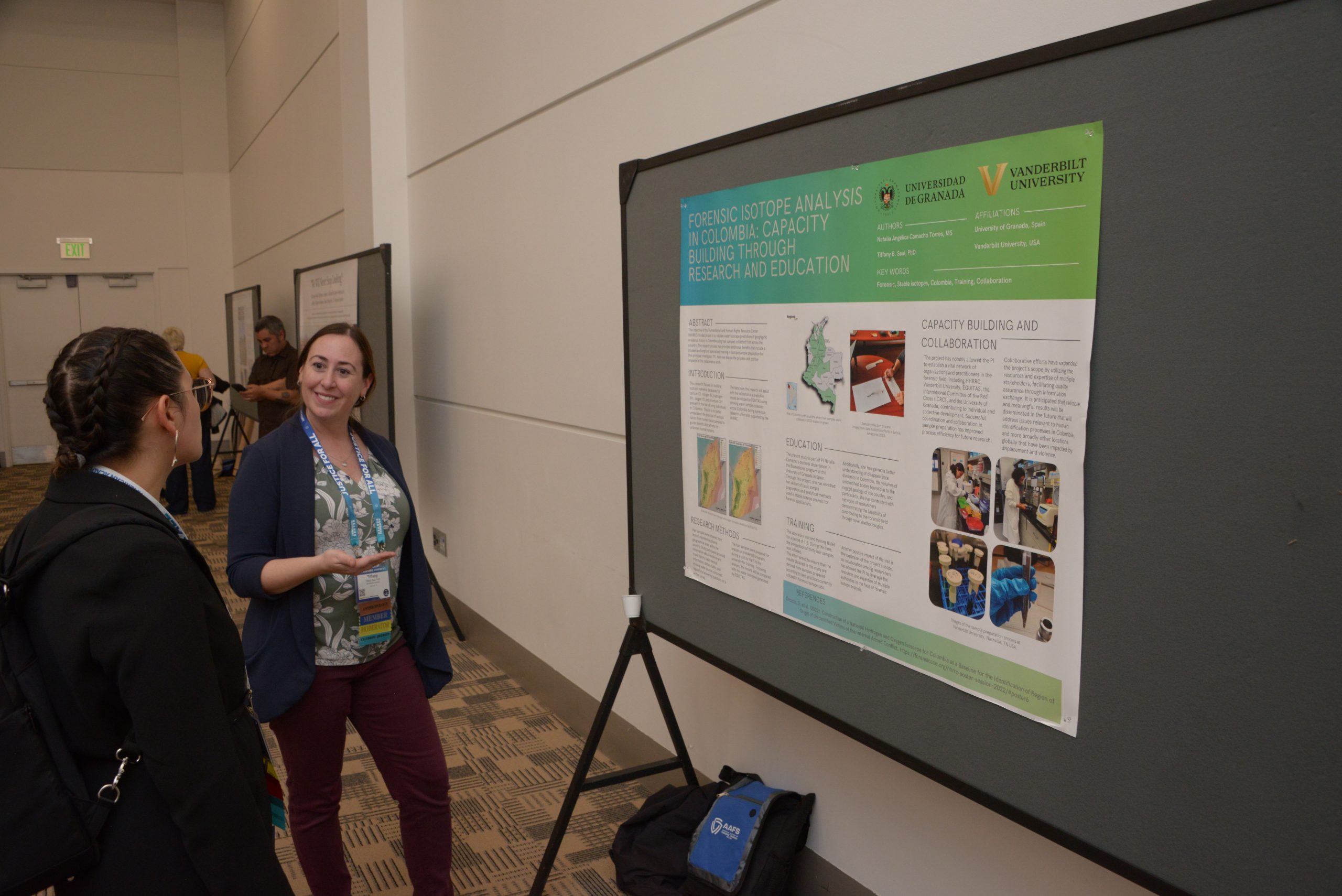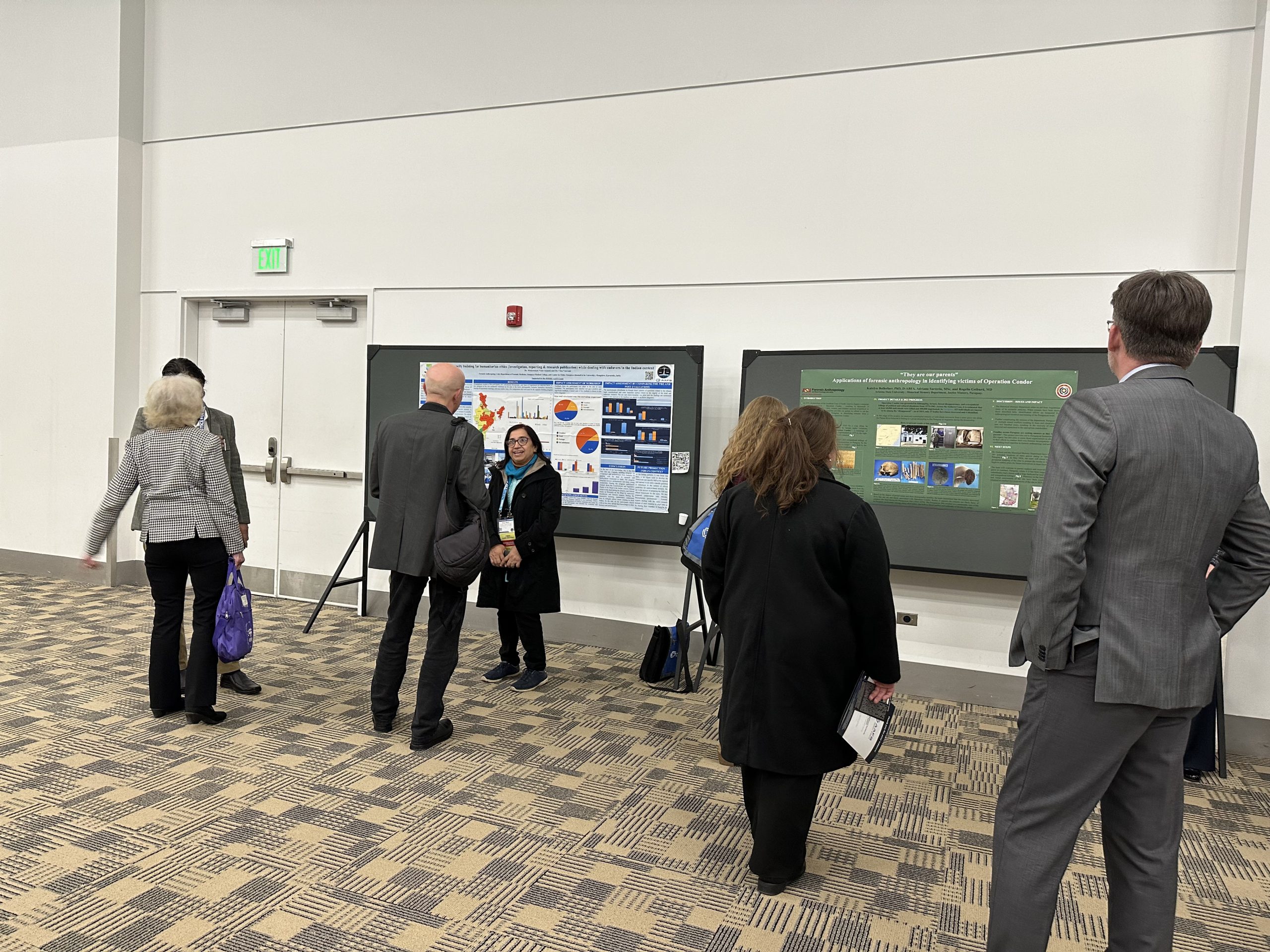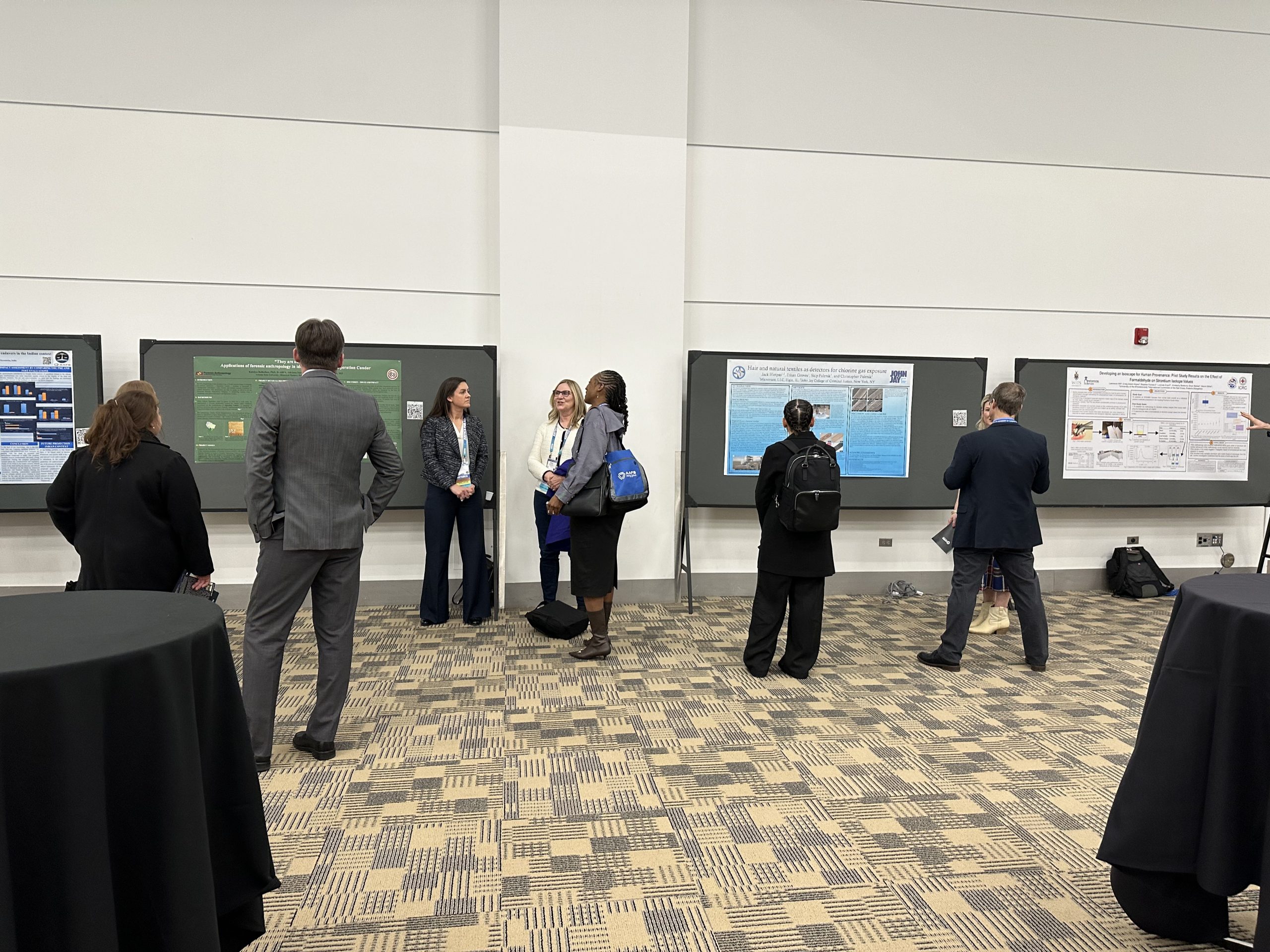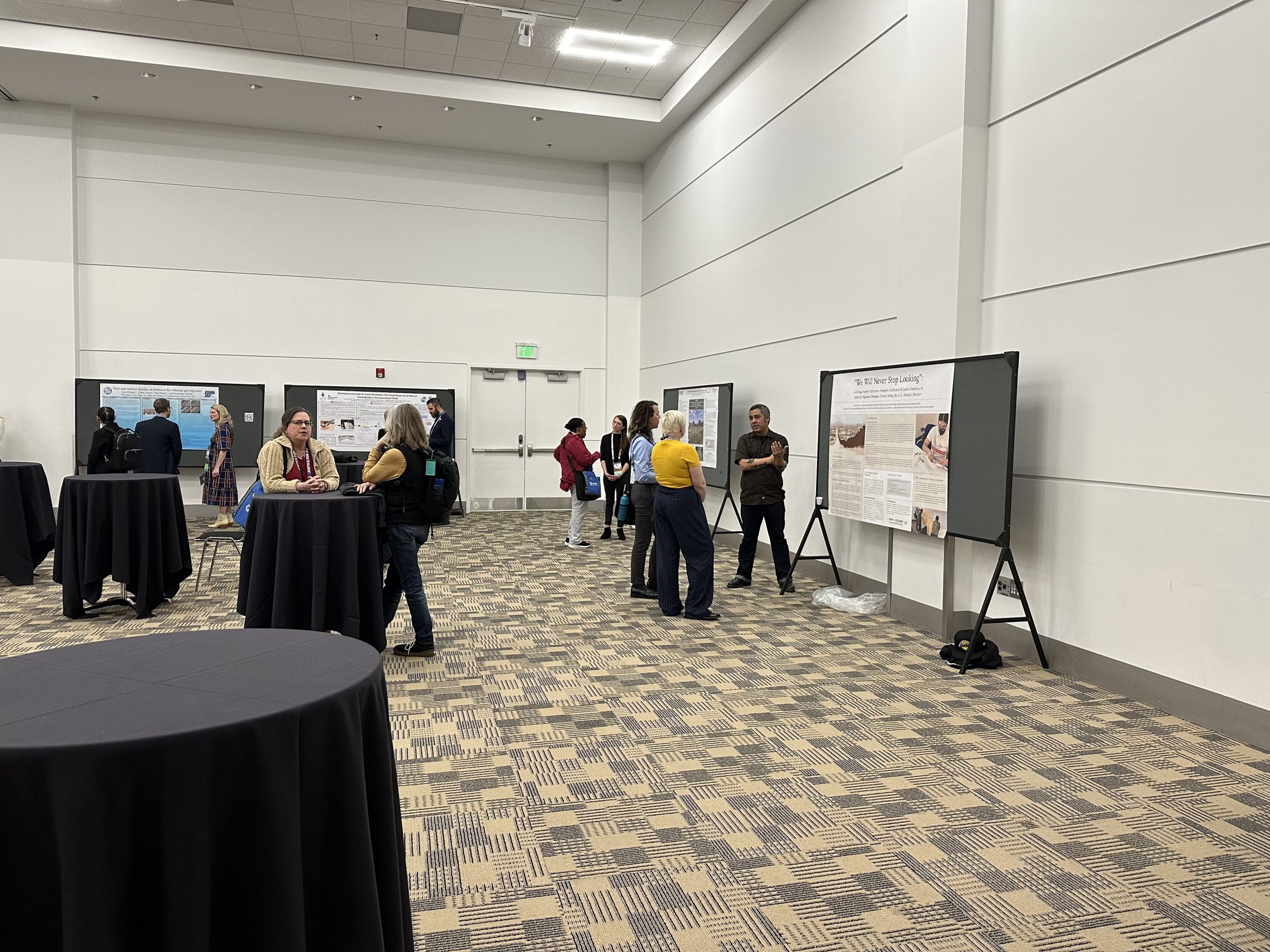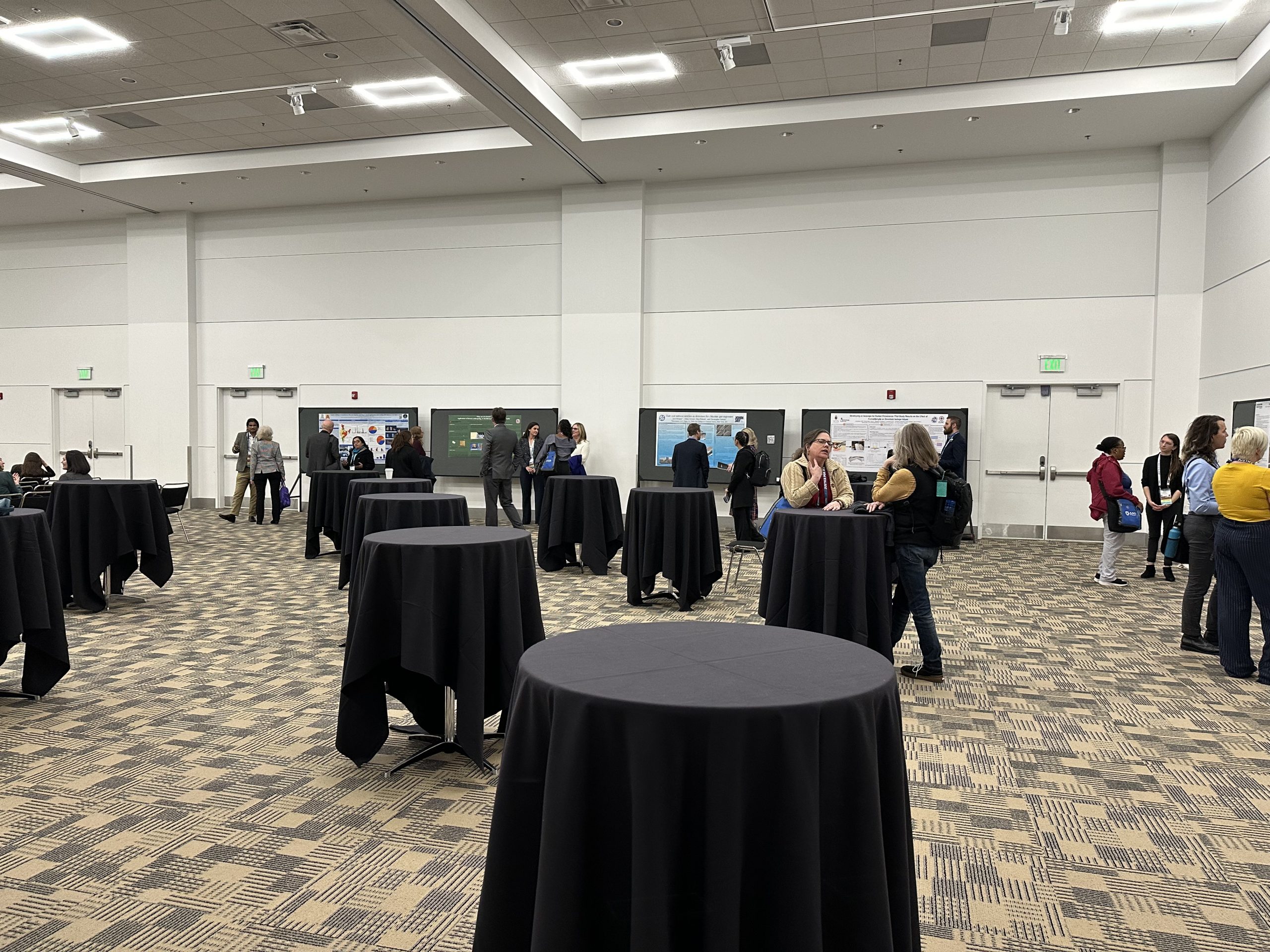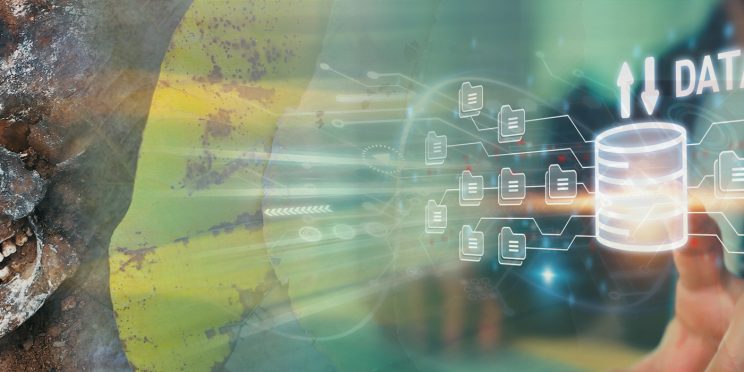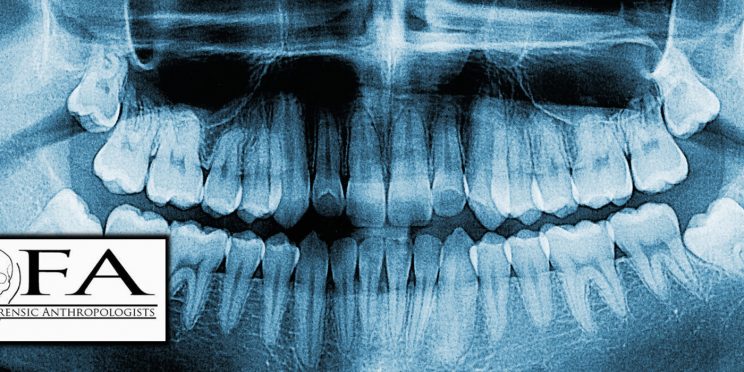← Back to the HHRRC Special Initiative
The Humanitarian and Human Rights Resource Center (HHRRC), an organization within the American Academy of Forensic Sciences (AAFS) and the Forensic Sciences Foundation (FSF) supported by the National Institute of Justice's (NIJ's) Forensic Technology Center of Excellence (FTCOE), hosted an in-person poster session where attendees had the opportunity to meet HHRRC researchers and learn about the application of contemporary forensic science and forensic medicine principles to global humanitarian or human rights projects requiring special forensic assistance.
This in-person poster session was hosted at the 76th Annual AAFS Scientific Conference in Denver, Colorado and attendance required conference registration. A selection of digital PDF posters along with short audio/video presentations from HHRRC poster session participants are accessible below and will remain archived on the website as a virtual library for future viewing purposes.
Poster Session Details
Date
Tuesday, February 20, 2024
6:00pm - 8:00pm MST
Location
Room: 301
76th Annual AAFS Scientific Conference, Colorado Convention Center, Denver, Colorado
*Attendance required conference registration.
Date
Tuesday, February 20, 2024
Materials became available at 6:00pm MST.
Location
A selection of digital PDF posters along with short audio/video presentations from HHRRC poster session participants are accessible below and will remain archived on the website as a virtual library for future viewing purposes.
Poster Presentations
Click on the poster title below to jump to that presentation. An asterisk (*) denotes the lead author.
POSTER 1
Assessment of Capacity Building for Humanitarian Ethics in Forensic Investigation, Reporting, and Research Publication Dealing with Cadavers in the Indian Context
Authors: Mohammad Nasir Ahmad* & Vina Vaswani
POSTER 2
“They Are Our Parents” – Applications of Forensic Anthropology in Identifying Victims of Operation Condor in Paraguay
Authors: Katelyn L. Bolhofner*, Adriana Sartorio, & Rogelio Goiburú
POSTER 3
Hair and Natural Textiles as Detectors for Chlorine Gas Exposure
Authors: Jack Hietpas*, Ethan Groves, Skip Palenik, & Christopher S. Palenik
POSTER 4
Developing an Isoscape for Human Provenance: Pilot Study Results on the Effect of Formaldehyde on Strontium Isotope Values
Authors: Lawrence Hill*, Craig Adam Keyes, Stephen Fonseca, Lucinda Evert, & Desiré Brits
POSTER 5
Disaster Management for Migrant Death in Maverick County, Texas
Authors: Molly A. Kaplan*, Courtney C. Siegert, Ivanna Robledo, Chloe P. McDaneld, Victoria Soto, & Kate Spradley
POSTER 6
Forensic Isotope Analysis in Colombia: Capacity-Building Through Research and Education
Authors: Tiffany Saul*, & Natalia Angélica Camacho Torres
POSTER 1
Assessment of Capacity Building for Humanitarian Ethics in Forensic Investigation, Reporting, and Research Publication Dealing with Cadavers in the Indian Context
Mohammad Nasir Ahmad* & Vina Vaswani
ABSTRACT
Professional, ethical approaches and humanitarian forensics are in the infancy stage in India. Forensic professionals in this context feel that there is an urgent need to raise awareness of this issue. With the support of the Humanitarian and Human Rights Resource Center Grant, the presenters conducted a few capacity-building training programs where collaborators learned how to mitigate ethical issues relating to cadavers from a humanitarian forensics lens. The programs helped spread the roots of humanitarian forensics and an ethical approach to dealing with cadavers.
POSTER 2
“They Are Our Parents” – Applications of Forensic Anthropology in Identifying Victims of Operation Condor in Paraguay
Katelyn L. Bolhofner*, Adriana Sartorio, & Rogelio Goiburú
Double click to view video full screen.
ABSTRACT
In 1975, dictatorships in the Southern Cone of South America began a campaign of political repression—Operation Condor—resulting in thousands of “disappeared” individuals. This presentation provides an update on efforts to aid the Historical Memory Department, Paraguay, in identifying remains from a clandestine mass grave associated with Operation Condor.
POSTER 3
Hair and Natural Textiles as Detectors for Chlorine Gas Exposure
Jack Hietpas*, Ethan Groves, Skip Palenik, & Christopher S. Palenik
ABSTRACT
This project explores a novel method for assessing the exposure of people and their clothing to chlorine gas, a resurgent chemical warfare agent. The research examines changes to the micro-structure of human hair and natural textile fibers that occur as a result of chlorine dosage (exposure time and concentration of chlorine gas). A suite of microscopical and microanalytical methods have been explored to examine and characterize exposed hair and fibers.
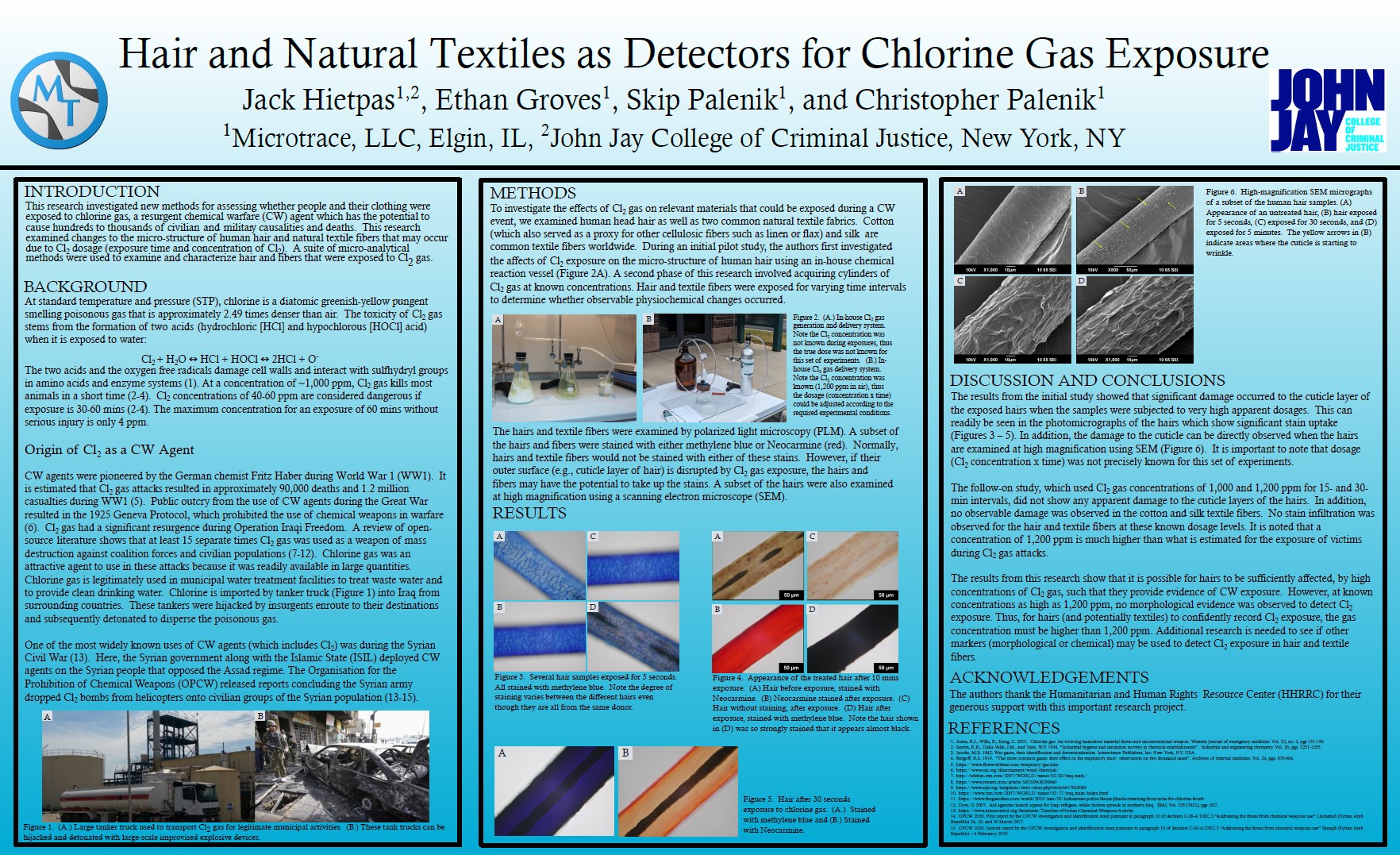
POSTER 4
Developing an Isoscape for Human Provenance: Pilot Study Results on the Effect of Formaldehyde on Strontium Isotope Values
Lawrence Hill*, Craig Adam Keyes, Stephen Fonseca, Lucinda Evert, & Desiré Brits
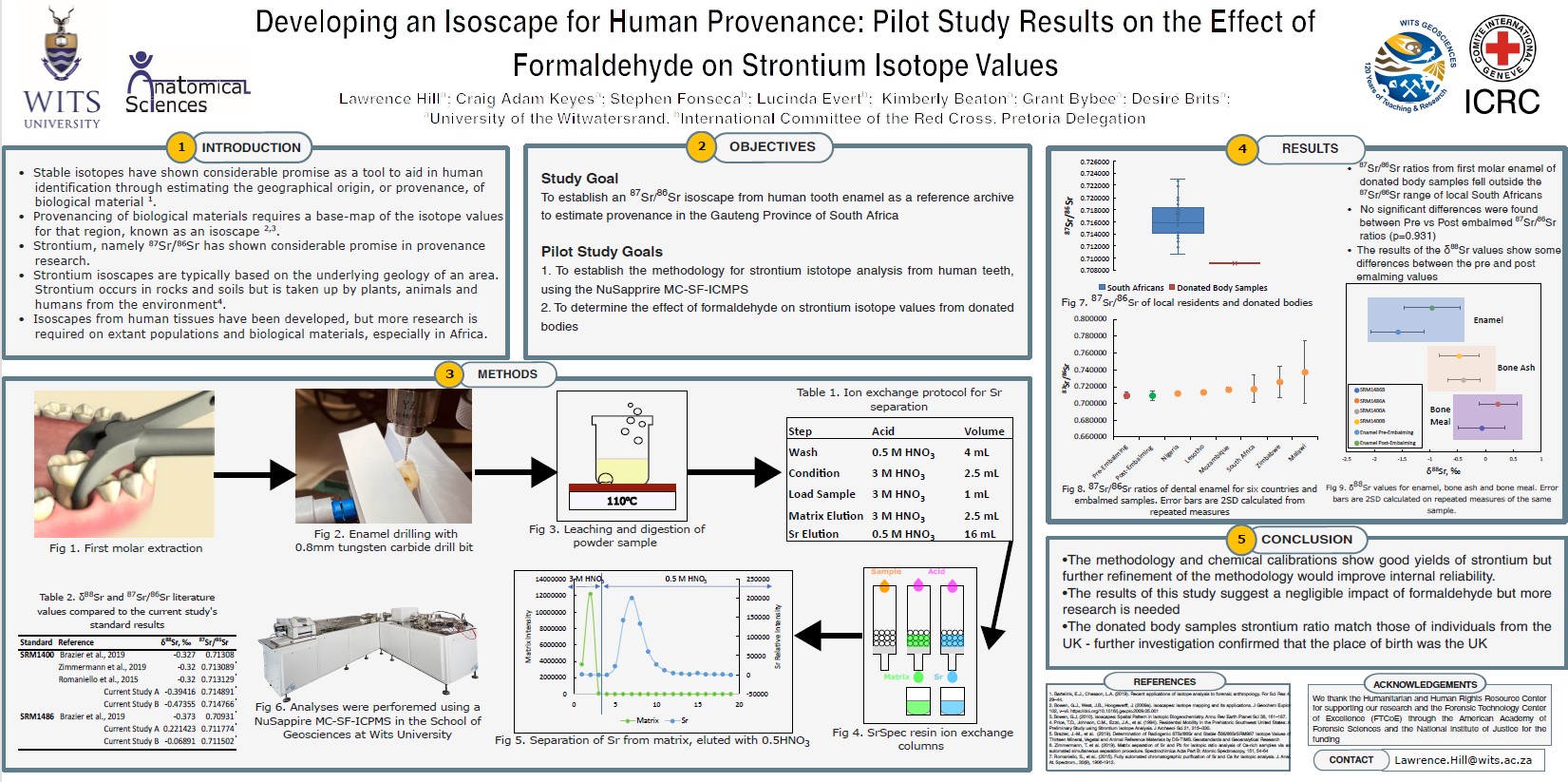
ABSTRACT
The use of strontium isotopes for provenance studies is well-established, but there are no publications on the effect of embalming chemicals such as formaldehyde on these values. This study sampled enamel and fingernails from donated decedents before and after embalming to evaluate the effect of formaldehyde on strontium isotope values.
POSTER 5
Disaster Management for Migrant Death in Maverick County, Texas
Molly A. Kaplan*, Courtney Siegert, Ivanna Robledo, Chloe P. McDaneld, Victoria Soto, & Kate Spradley
ABSTRACT
This poster presents Operation Identification's emergency exhumation response for 26 individuals buried in Maverick County, Texas. These efforts mark a shift in the project’s scope, which has traditionally focused on the long-term deceased but now manages recent migrant death cases. Development of disaster victim identification protocols is ongoing in the region.
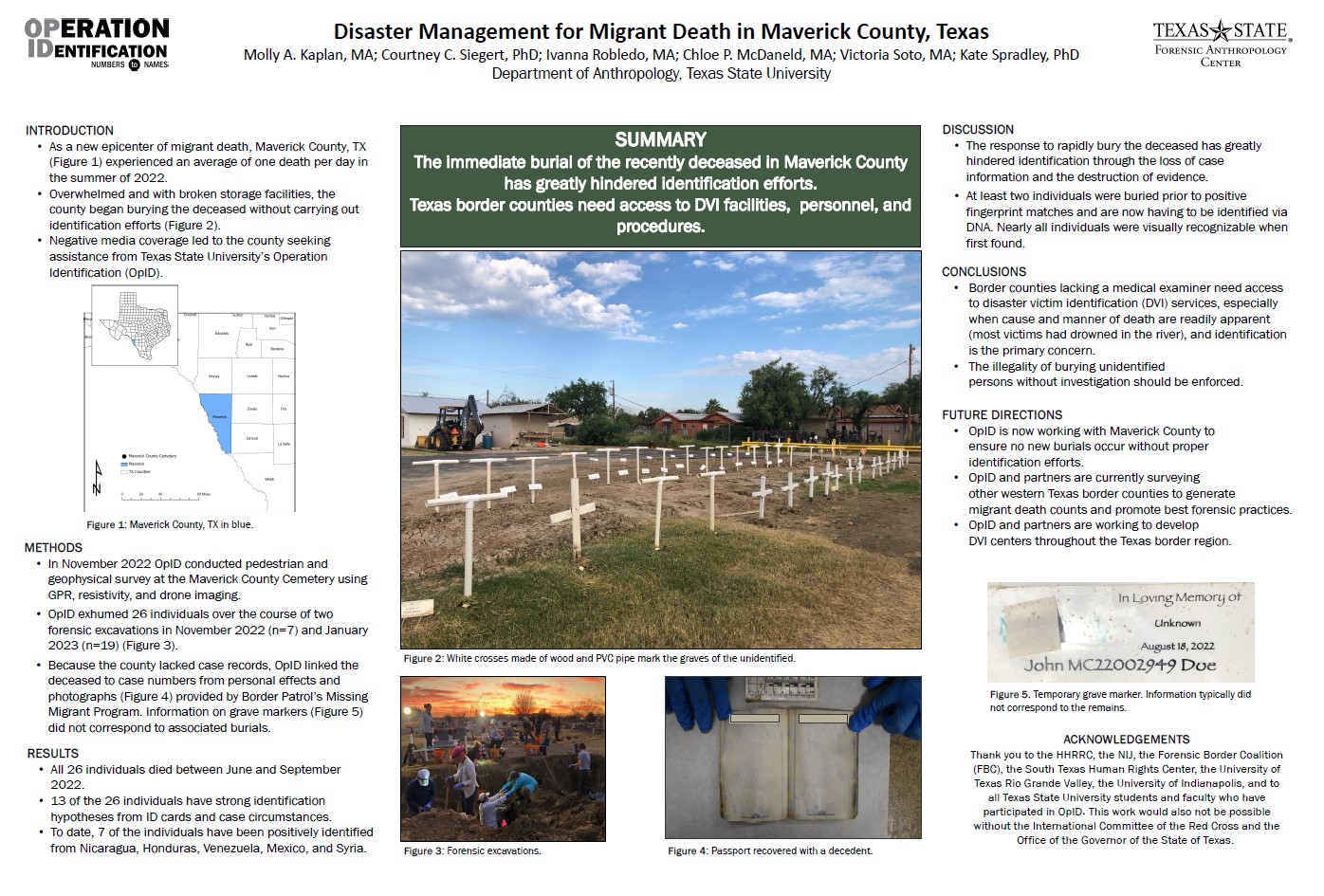
POSTER 6
Forensic Isotope Analysis in Colombia: Capacity-Building Through Research and Education
Tiffany Saul* & Natalia Angélica Camacho Torres
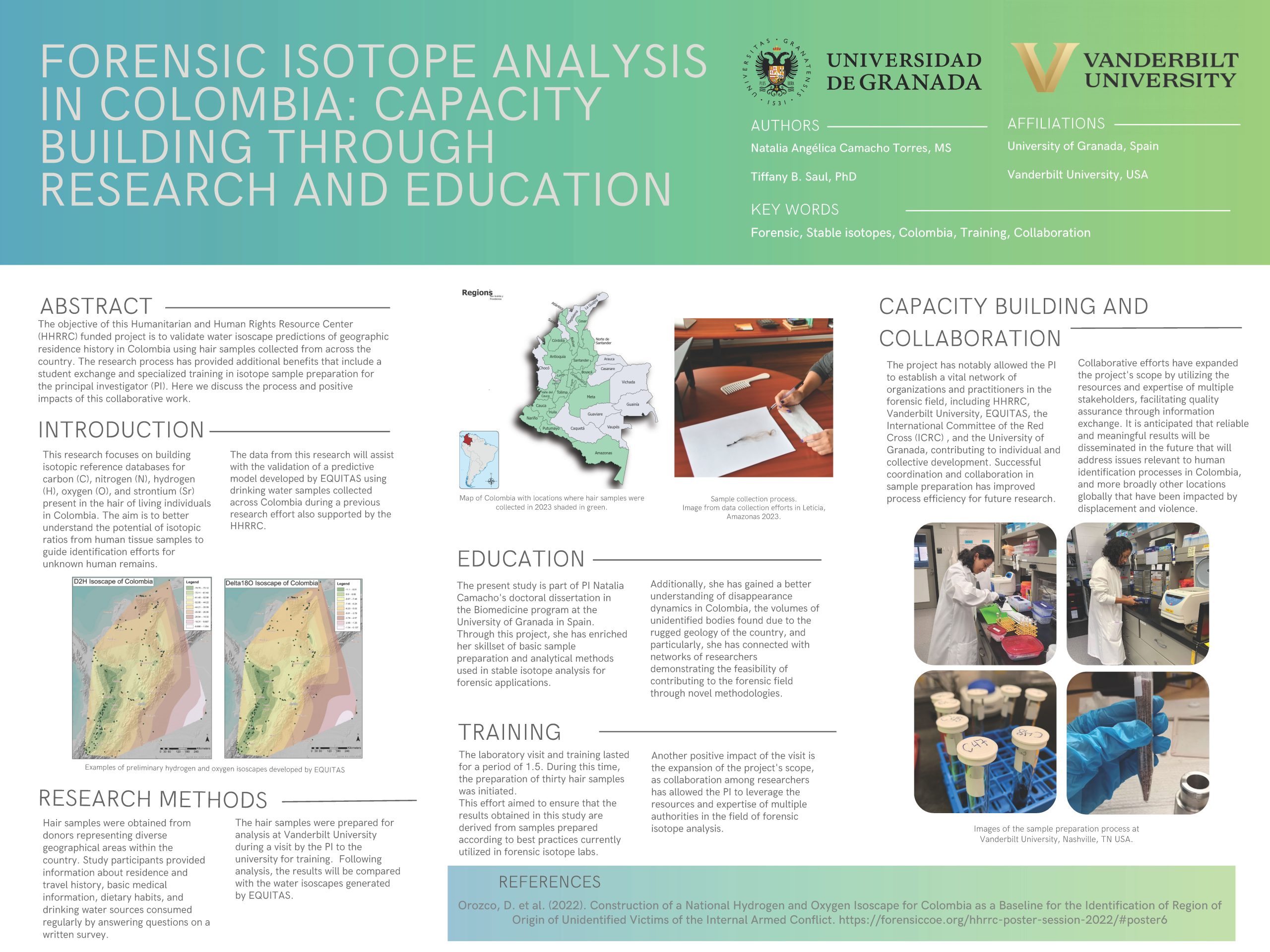
ABSTRACT
Although the primary objective of this Humanitarian and Human Rights Resource Center–funded project is to validate water isoscape predictions of geographic residence history in Colombia for assisting with human identification, there have been additional benefits that include a student exchange and specialized training in isotope sample preparation. This presentation will discuss the positive benefits of this collaborative endeavor.
Check out photos from the 2024 In-Person Poster Session!
Funding for this Forensic Technology Center of Excellence event was provided by the National Institute of Justice, Office of Justice Programs, U.S. Department of Justice.
The opinions, findings, and conclusions or recommendations expressed in this event are those of the presenter(s) and do not necessarily reflect those of the U.S. Department of Justice.
Contact us at ForensicCOE@rti.org with any questions and subscribe to our newsletter for notifications.


